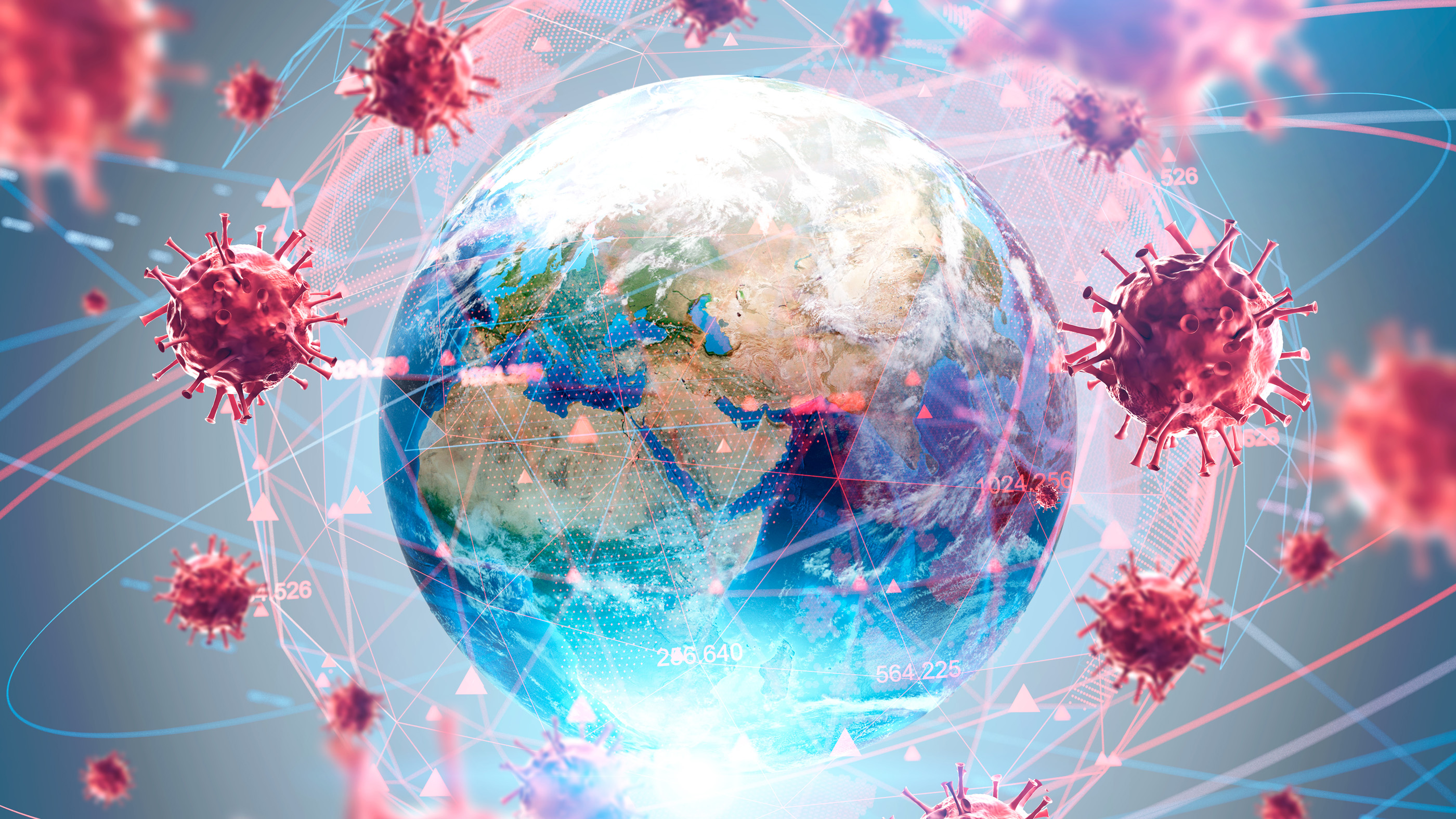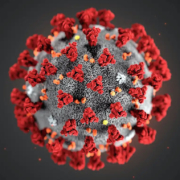Everything You Ever Wanted to Know about COVID-19, and More
There are two camps in the world of COVID-19, believers and non-believers.
Believers tend to follow the science and medical community recommendations, while the non-believers generally don’t.
Some believers have had first hand experience with COVID-19 inflections; others haven’t, but most share a common respect for a novel Virus that continues to teach humans about the thin line between life and death.
For the non-believers COVID-19 is more nuanced, characterized not by facts and growing daily public death tolls, but by a belief COVID-19 won’t kill me, that only happens to seniors already knocking on death’s door, and to other people they don’t know. If they do contract the virus, it will likely be little more than a bad case of the flu. It’s a belief system more a kin to a religion than scientific fact and empirical evidence.
Come Together
As Americans, we have a history of coming together in time of national crisis, be it the threat or reality of war and other catastrophic events. Historically, we have looked to our leaders in a time of crisis and expect them to call for unity in a common public purpose – a norm which has vanished under the present divisive and absentee leadership and which is guilty of national malpractice.
President Trump, who self-describes himself as a “victim” because the media keep talking about “Covid, Covid, Covid”, while claiming unmasked at packed supporter rally this week that, “… coronavirus fatalities are being exaggerated because doctors get more money and hospitals get more money if they say that Covid-19 was the cause of death.” Not exactly a message of unity or national leadership during a global crisis affecting all Americans.
Leana Wen of the Washington Post, adeptly described the current administration’s response to nation’s immediate and life threating challenge of this new century this way: “For eight months, Americans have been asking what the Trump administration’s national strategy is to combat the coronavirus pandemic. We finally have our answer: capitulation.”
For weeks, the White House has been advancing a “herd immunity” approach of essentially letting the coronavirus infect (burn-through) the majority of the population. President Trump insists that the United States is “rounding the corner” despite record-breaking infection rates and rising hospitalizations.
Nearing a year into the COVID-19 pandemic the White House finally revealed its plan
On Sunday, White House Chief of Staff Mark Meadows stated bluntly: “We’re not going to control the pandemic.” When pressed on why not, Meadows said the novel coronavirus “is a contagious virus just like the flu,” and that “what we need to do is make sure that we have the proper mitigation factors, whether it’s therapies or vaccines or treatments to make sure that people don’t die from this.”
No, this is not January 2020, and no, it’s not a national pandemic plan or response. But that’s Trump’s plan, October 2020 — to accept our fate and surrender to the virus. Cross our fingers and place all of our hopes on undeveloped vaccines and unproven therapies, while ignoring a rising national death count, and letting the virus rip through our communities — music to the ears of “non-believers”.
A Pandemic, Closer to Home
Lt. Gov. Green is now advocating a statewide mask mandate after learning on Sunday that Hawaii Island suffered its highest single-day jump in new COVID-19 cases since the start of the pandemic …and the tourists are only just beginning to return to the islands.
As a physician and a “believer” in the health threat COVID-19 represents to residents of Hawaii, Green knows masks are the first line of protection against the virus, wearing them will save lives, limit and contain spread, and manage a pandemic in line with the state’s limited medical response resources.
Yet managing a pandemic can get in the away of normal business operations and the state’s economy (pain and all) is surviving and will survive, despite an absence of national leadership in establishing pandemic response standards, or provide the resources to fight the fight against COVID-19 and protect the public well-being. Instead, we have a national policy of neglect, denial, obstruction, and incompetency.
As for this president’s claims of a vaccine available in two weeks and counting, and still counting, the global scientific and medical community project 2021 before any meaningful vaccine response will become available to the general public. In the meantime, we need to do what humans do best, adjust and adapt with an united national response and purpose.
Now you can play a game of denial, throw caution to the wind, believe in herd immunity (which is an oxymoron) or scream about freedom infringement without any consideration to responsibility to community and country — or face the facts. We are still in the middle of a global pandemic, which locally, has found it way to every island community through out the state creating unwanted economic and social adjustments.
This highly contagious and deadly global pandemic will not last forever. In the meantime, throwing caution to the wind, will only further enable the consequences of surrendering to a pandemic marked by over 1 million deaths globally, and 230,000 deaths within the United States.
A 100 year old history lesson
History is a powerful teacher. In 1918, a novel strand of influenza (Spanish Flu) killed more people than the 14th century’s Black Plague which ravaged Europe. At that time, the pandemic deaths spiked in 1918, and then slowly dropped off the following year, however, it wasn’t until well into 1921 before the deadly virus was no longer a threat to the general population, and by then more than 2,300 people in Hawaii had died from the virus.
 Hawaii’s health officials at the time learned from cause and effect that social distancing and shutting down events and gathering places were effective measures to battle a dangerous airborne virus.
Hawaii’s health officials at the time learned from cause and effect that social distancing and shutting down events and gathering places were effective measures to battle a dangerous airborne virus.
In the absence of an effective vaccine, the science tell us there’s a natural progression which a virus follows — but not always — it becomes less lethal as time wears on.
The natural order of an influenza virus is to change, and in the case of the 1918 flu and pandemic, the science told us the virus simply mutated in the direction of other influenza viruses, which is to become considerably milder over time, coupled to a developing immunity within the general population, and this process took several years.
COVID-19 Is More than a Question of Life or Death
The long term effects of COVID-19 infections are just beginning to be understood. 
COVID-19 symptoms can sometimes persist for months. The virus can damage the lungs, heart and brain, which increases the risk of long-term health problems.
The Mayor Clinic recently reported that most people who have coronavirus disease 2019 (COVID-19) recover completely within a few weeks. But some people — even those who had mild versions of the disease — continue to experience symptoms after their initial recovery.
For example, older patients and people with many serious medical conditions are the most likely to experience lingering COVID-19 symptoms — the most common signs and symptoms that linger over time include:
- Fatigue
- Cough
- Shortness of breath
- Headache
- Joint pain
Although COVID-19 is seen as a disease that primarily affects the lungs, it can damage many other organs as well. This organ damage may increase the risk of long-term health problems.
The Legacy of the COVID-19 (coronavirus) is much more than Catch and Release
Organ damage caused by COVID-19 includes:
- Imaging tests taken months after recovery from COVID-19 which show lasting damage to the heart muscle, even in people who experienced only mild COVID-19 symptoms. This may increase the risk of heart failure or other heart complications in the future.
- The type of pneumonia often associated with COVID-19 can cause long-standing damage to the tiny air sacs (alveoli) in the lungs. The resulting scar tissue can lead to long-term breathing problems.
- Even in young people, COVID-19 can cause strokes, seizures and Guillain-Barre syndrome — a condition that causes temporary paralysis. COVID-19 may also increase the risk of developing Parkinson’s disease and Alzheimer’s disease.
Blood clots and blood vessel problems
COVID-19 can make blood cells more likely to clump up and form clots. While large clots can cause heart attacks and strokes, much of the heart damage caused by COVID-19 is believed to stem from very small clots that block tiny blood vessels (capillaries) in the heart muscle.
Other organs affected by blood clots include the lungs, legs, liver and kidneys. COVID-19 can also weaken blood vessels, which contributes to potentially long-lasting problems with the liver and kidneys.
Problems with mood and fatigue
People who have severe symptoms of COVID-19 often have to be treated in a hospital’s intensive care unit, with mechanical assistance such as ventilators to breathe. Simply surviving this experience can make a person more likely to later develop post-traumatic stress syndrome, depression and anxiety.
Because it’s difficult to predict long-term outcomes from the new COVID-19 virus, scientists are looking at the long-term effects seen in related viruses, such as severe acute respiratory syndrome (SARS).
Many people who have recovered from SARS have gone on to develop chronic fatigue syndrome, a complex disorder characterized by extreme fatigue that worsens with physical or mental activity, but doesn’t improve with rest. The same may be true for people who have had COVID-19.
Many long-term COVID-19 effects still unknown
Much is still unknown about how COVID-19 will affect people over time. However, researchers recommend that doctors closely monitor people who have had COVID-19 to see how their organs are functioning after recovery.




Leave a Reply
Join the Community discussion now - your email address will not be published, remains secure and confidential. Mahalo.